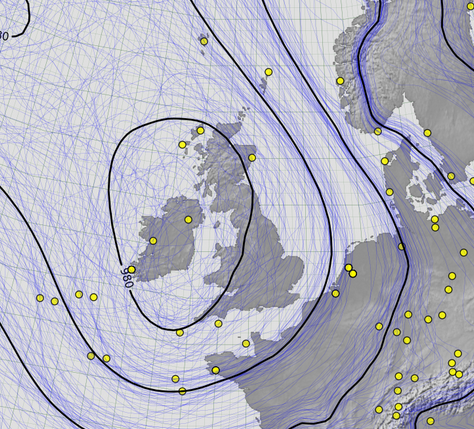Derived data - longer-term averages¶
Most original observations report on the weather at a point in time and space, or at most a daily integration. So to reconstruct climate variability on large space and time scales you need a lot of them - often hundreds of millions. Until quite recently, using observations on this scale was impractical, and a lot of climate work was done with derived products - mostly monthly averages - instead.
Computer systems have now reached the point where using hundreds of millions of observations is not that hard, and climate research is much more focused on short-term, often extreme, events which can’t be studied in monthly averages. So we are now much more interested in the original observations than their long-term averages and should concentrate data rescue work on the original observations.
However, there are still several widely-used products relying on monthly averages or totals, and there will still be research projects where the additional cost of using original data is not justified, or where only the monthly data is accessible. So there will still be value in digitising derived data.
Sets of published derived data in the UK archives include:
- British Rainfall - monthly rainfall totals for UK stations 1860-1991 (Mostly already digitised by the NCIC historic droughts project).
- Ten-year rainfall - decadal rainfall summaries 1877-1960
- Weekly, Monthly , and Quarterly Weather reports 1884-1993. Longer-term average versions of the Daily Weather Reports.
We should aim not to need these, because we should have the original observations of which they are summaries. They should be digitised only if they are needed for a particular project.
